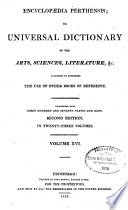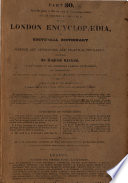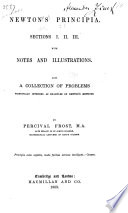 | Isaac Newton - Celestial mechanics - 1729 - 444 pages
...neither before it arrives at its lad place and the motion ceafes, nor after, but at the very in/tant it arrives ; that is, that velocity with which the body arrives at its laft place, and with which the motion ceifes. And in like manner, by the ultimate ratio of evancfccnt... | |
 | John Mason Good - 1819 - 788 pages
...moved, neither before it arrives at iu place and the motion ceases, nor after ; but at the very instant it arrives; that is, that velocity with which the...quantities, not before they vanish, nor afterwards, but with which they vanish. In like manner, the first ratio of nascent quantities is that with which they... | |
 | Encyclopedias and dictionaries - 1816 - 778 pages
...moved, neither before it arrives at its place and the motion ceafes, nor after, but at the very inftant it arrives ; that is, that velocity with which the body arrives at its laft place, and with which the motion ceafes. And in like manner, by the ultimate ratio of evanefcent... | |
 | Thomas Curtis (of Grove house sch, Islington) - 438 pages
...ceases, nor after, but at the very instant it arrives ; that is, that velocity with which the body an ves at its last place, and with which the motion ceases....quantities, not before they vanish, nor afterwards, but with which they vanish. In like manner, the first ratio of nascent quantities is that with which they... | |
 | Encyclopedias and dictionaries - 1841 - 1040 pages
...last position, and with which the motion ceases. And similarly, by the ultimate ratio of vanishing quantities, is to be understood the ratio of the quantities not before they vanish, nor after they vanish, but with which they vanish. Similarly the prime ratio of nascent quantities is the... | |
 | Harvey Goodwin - Mathematics - 1849 - 588 pages
...moment when it reaches it; that is, the velocity with which the body reaches its ultimate position, and with which the motion ceases. And in like manner...ratio of the quantities, not before they vanish, nor after they have vanished, but when they vanish. So also the prime ratio of nascent quantities is the... | |
 | Sir Isaac Newton - Curves, Plane - 1863 - 316 pages
...last position, and with which the motion ceases. And similarly, by the ultimate ratio of vanishing quantities is to be understood the ratio of the quantities, not before they vanish, nor after, but with which they vanish. Likewise also, the prime ratio of nascent quantities is the ratio... | |
 | Catherinus Putnam Buckingham - Calculus - 1875 - 374 pages
...motion ceases, nor after, but at the' very instant it arrives : that is, the velocity with which it arrives at its last place, and with which the motion...quantities, not before they vanish nor afterwards, but with which they vanish." The illustration here given by Newton unfortunately throws no additional light... | |
 | Catherinus Putnam Buckingham - Calculus - 1875 - 362 pages
...motion ceases, nor after, but at the very instant it arrives : that is, the velocity with which it arriv.es at its last place, and with which the motion...quantities, not before they vanish nor afterwards, but with which they vanish." no easier to conceive a body coming to a stop with any velocity, than it is... | |
 | 1876 - 1088 pages
...its last place and the motion ceases, nor after, but at the very instant it arrives ; that is, the velocity with which the body arrives at its last place,...the ratio of the quantities, not before they vanish, not afterwards, but with which they vanish. In like manner, the first ratio of nascent quantities is... | |
| |